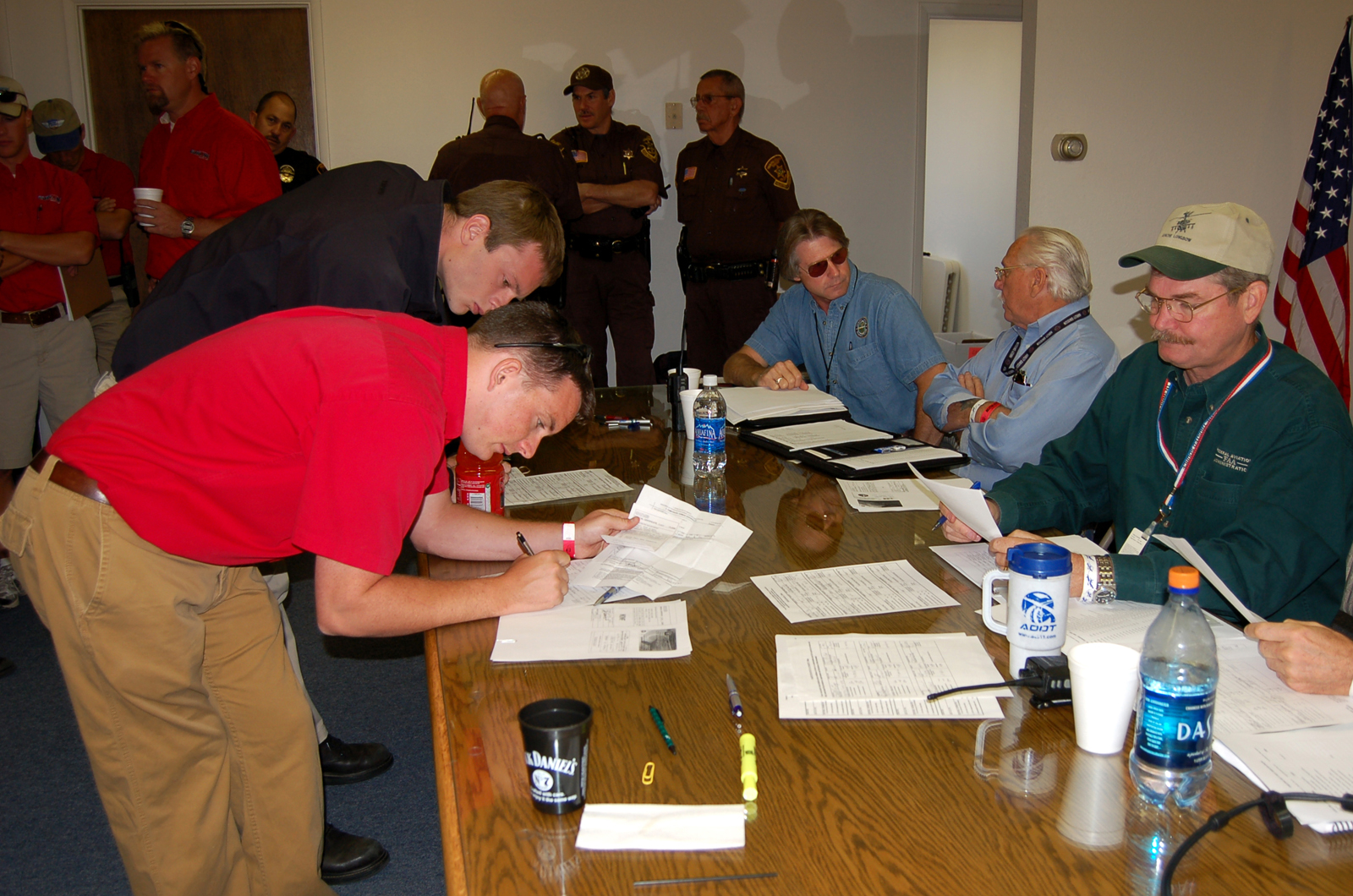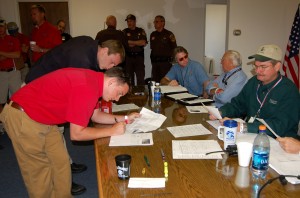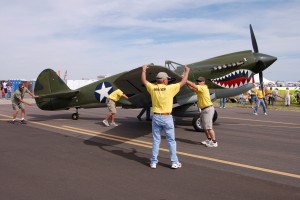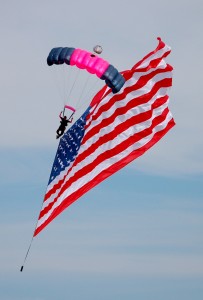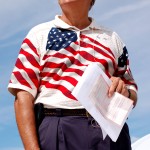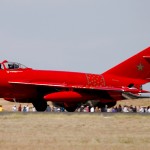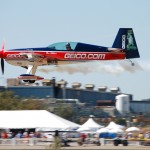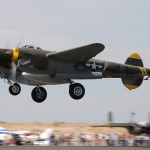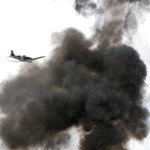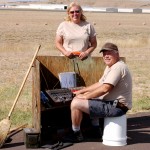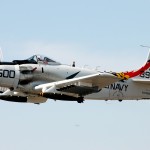By Bob Shane
Ernest A. Love Field Airport (PRC) was the place to be on September 30. Located in the mountains of north central Arizona, in historic Prescott, Ariz., it was the site of Arizona Skyfest 2006, which attracted almost 25,000 people.
Warren Parkes, the show’s executive director, put together a very professional program. On Saturday morning, things got rolling at 7 a.m., with the mandatory pilots briefing. The air boss, Denny Cunningham, a former controller at Chicago O’Hare International Airport, advised the pilots of show parameters. The air show box would encompass all airspace within a five-mile radius of the airport, and up to 10,000 feet altitude.
Gates opened to the public at 9 a.m., and the air show began at 11 a.m. The Arizona Skyfest is billed as one of the few air shows “where you can take to the air and view the action from above.” Guidance Helicopters, Inc. offered rides in Robinson R-44 helicopters for $39. Air Grand Canyon made rides available in a Cessna 206 for the same price, and flights were available in a Mitchell B-25H bomber for $375.
Prior to the air show, attendees had plenty to see and do. They toured numerous aircraft on static display and watched radio controlled aircraft demonstrations. Tuskegee Airmen and P-38 fighter aces offered Q & A sessions in the North-Aire Hangar.
The Misty Blues opened the show with a flag jump during the playing of the national anthem. Members of the world’s only all-women skydiving team live all over the country, and come together every weekend for skydiving competitions and air show demonstrations. The membership includes commercial airline pilots, a doctor, a nurse, an accountant and an engineer. The team has been together for 17 years, holds 35 world records and has logged more than 40,000 jumps.
As usual, the aerobatic contingent gave stellar performances. Tim Weber, one of the top aerobatic pilots in the country, led the way in his German-built Extra 300, sponsored by Geico. The unlimited-class composite monoplane is powered by an engine packed
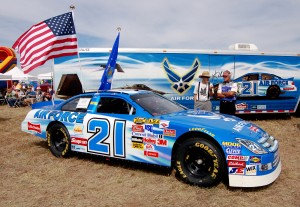
Attendees perused numerous displays, including the #21 backup NASCAR sponsored by the U.S. Air Force.
with more than 300 horsepower and has a roll rate exceeding 340 degrees per second.
Rob Harrison, the “Tumbling Bear,” flew his custom-built, Czech designed Zlin 50LX. Always a crowd pleaser, he put his lightweight aluminum and titanium plane through a series of punishing aerobatic maneuvers. Bill Cornick, the “Grandfather of Aerobatics,” demonstrated the aerobatic capability of his Pitts S2-C. He teamed up with Tim Weber for the high energy “squirrel cage” aerobatic performance.
Craig Teft, a newcomer to the aerobatic scene, retired in May 2006 from a professional military career flying F-4s and F-15s. He executed a solid aerobatic routine in his Pitts S-2C.
The warbird contingent was very strong. Steve Hinton flew the Planes of Fame’s P-38 Lightning, which sported new nose art, 23 Skidoo. Jason
Somes piloted one of only three flyable Japanese Zeroes in existence today. The Commemorative Air Force and the Museum of Flying in Santa Monica, Calif., own that rare WWII fighter.
Other warbirds included Chris Woods’ P-51D, painted to match the fighter flown by Jim Brooks, a World War II ace. A Supermarine Spitfire 1X replica, designed and built by Prescott resident Bob Deford, also took to the air. Its Allison V-12 engine, which produces 1,325 hp, turns a three-bladed prop originally made for a DC-3. Deford built the aircraft in eight years, with the help of numerous friends.
Bob Grondzik’s Douglas AD-6 Skyraider was an awesome addition to the flying segment of the show. Originally built as a long-range attack/torpedo bomber capable of being launched from the deck of a WWII aircraft carrier, it entered service with the U.S. Navy in December 1946. It served as a frontline attack aircraft in Korea and was the most effective close support aircraft during the Vietnam War. The Skyraider capped off the air show with a ground attack demonstration. Its flying was synchronized to the detonation of a special effects “wall of fire.”
The contingent of jet aircraft scheduled to participate in the flying portion of the program was formidable. However, only Ray Bachman’s MiG-17 and Greg Galpin and Chuck McCoy’s L-39s were able to get airborne. The Russian Eagle Demo Team’s high profile Navy F-18 Super Hornet and MiG-21 remained grounded with mechanical problems.
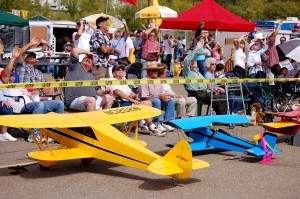
Planes used in the radio controlled aircraft demonstration sat on the ramp while spectators watched the real airplanes perform overhead.
The cancellation of the F-18 flight demonstration also resulted in the cancellation of a Heritage Flight. Despite that drawback, it was a very successful show.
- Herb Hunter was the air show announcer for this year’s Arizona Skyfest.
- Ray Bachman, in his beautiful red MiG-17, gave a star jet performance.
- Tim Weber, piloting the Geico Extra 300, thrilled spectators with his hard-core aerobatics.
- Steve Hinton flew the P-38 23 Skidoo.
- A Japanese Zero flies through the rising smoke
- Barb and Roger Crawford, of Mad Bomber Air Show Special Effects, LLC, provided the pyrotechnics for the show.
- Skyraider Bob” Grondzik piloted the awesome Douglas AD-6 Skyraider.











